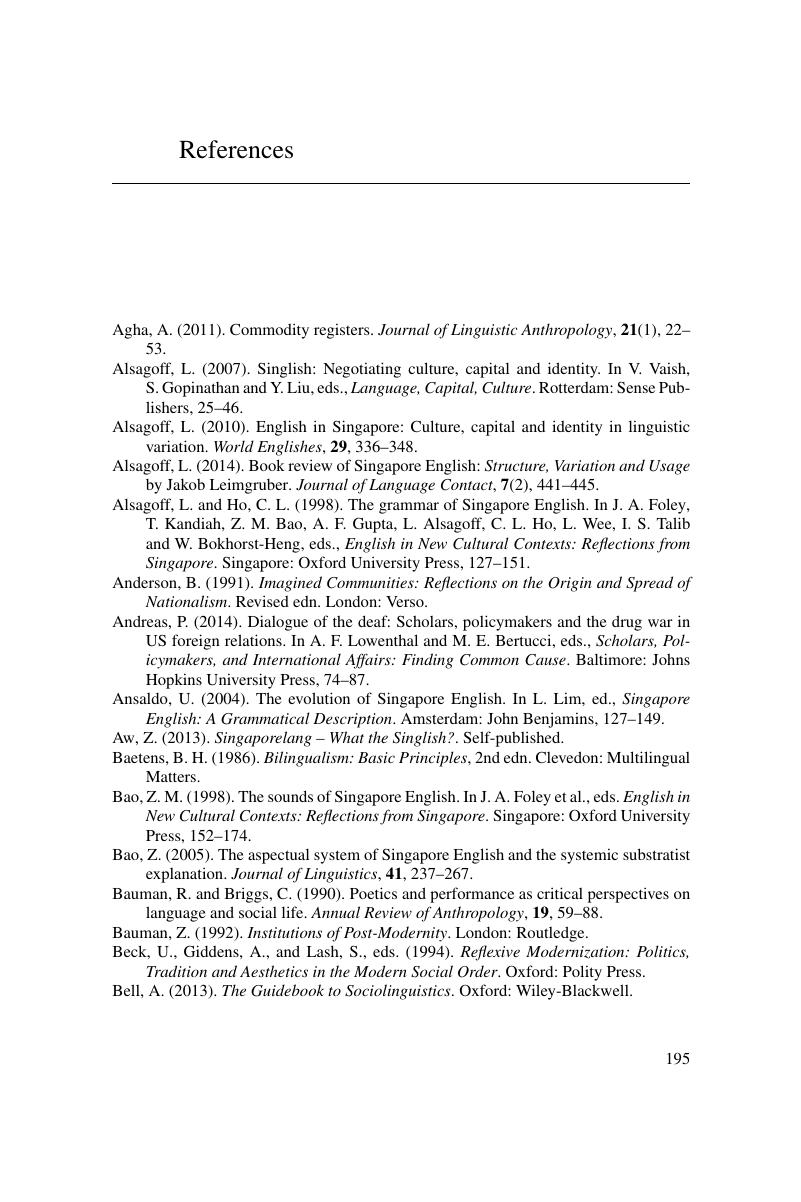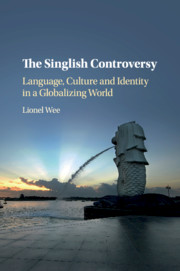Book contents
- The Singlish Controversy
- The Singlish Controversy
- Copyright page
- Contents
- Figures
- Tables
- Preface
- Acknowledgements
- Introduction: Questions about the Singlish Controversy
- 1 Language Policy in Singapore: English, Singlish and the Mother Tongues
- 2 Ideology Pooling and Meta-Discursive Convergence in the Singlish Debate
- 3 Language Experts, Linguistic Chutzpah and the Speak Good Singlish Movement
- 4 Voice: Who Speaks about Singlish?
- 5 The Commodification of Singlish
- 6 Singlish, Migration and Mobility
- 7 What Is Singlish? Language, Culture and Identity in a Globalizing World
- References
- Index
- References
References
Published online by Cambridge University Press: 19 January 2018
- The Singlish Controversy
- The Singlish Controversy
- Copyright page
- Contents
- Figures
- Tables
- Preface
- Acknowledgements
- Introduction: Questions about the Singlish Controversy
- 1 Language Policy in Singapore: English, Singlish and the Mother Tongues
- 2 Ideology Pooling and Meta-Discursive Convergence in the Singlish Debate
- 3 Language Experts, Linguistic Chutzpah and the Speak Good Singlish Movement
- 4 Voice: Who Speaks about Singlish?
- 5 The Commodification of Singlish
- 6 Singlish, Migration and Mobility
- 7 What Is Singlish? Language, Culture and Identity in a Globalizing World
- References
- Index
- References
Summary

- Type
- Chapter
- Information
- The Singlish ControversyLanguage, Culture and Identity in a Globalizing World, pp. 195 - 208Publisher: Cambridge University PressPrint publication year: 2018



